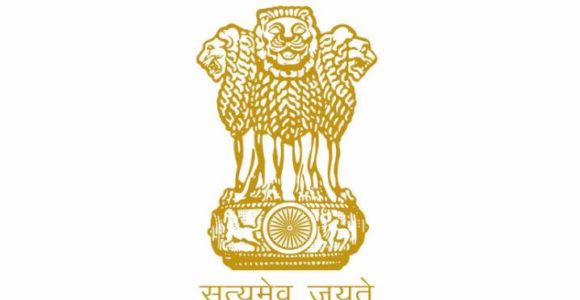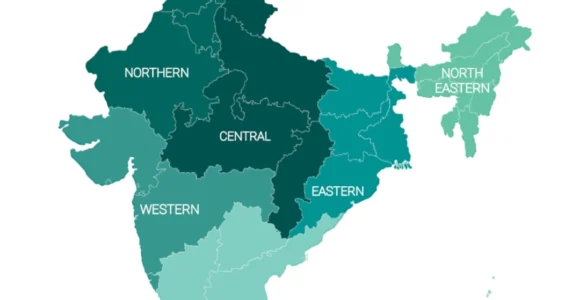Lala Lajpat Rai
| Full Name | Lala Lajpat Rai |
| Date of Birth | January 28, 1865 |
| Place of Birth | Dhudike, Punjab (now in Pakistan) |
| Father | Lala Radha Kishan |
| Mother | Name not widely known |
| Spouse | Gulab Devi |
| Children | Several (names not widely documented) |
| Date of Death | November 17, 1928 |
| Cause of Death | Injuries sustained during a police beating |
| Nationality | Indian |

Introduction
Lala Lajpat Rai was one of the most influential leaders in India’s fight for independence. Known for his courage, determination, and dedication to social and political reform, he is revered as one of the prominent figures in the Indian freedom movement. He was a member of the Indian National Congress (INC) and later worked alongside other nationalists to create awareness about British colonial oppression in India.
Childhood & Early Life:
- Born: January 28, 1865
- Place of Birth: Dhudike, Punjab (now in Pakistan)
- Family: Lala Lajpat Rai belonged to a well-respected Hindu family. His father, Lala Radha Kishan, was an influential school teacher, while his mother, whose name is not widely documented, was a caring figure in his early life.
Rai’s formative years were marked by his interest in education, and he excelled in his studies. He was particularly influenced by Western liberalism, Indian history, and social issues. He attended Government College in Lahore (now in Pakistan), where he was exposed to nationalist ideas and became acquainted with leaders like Bal Gangadhar Tilak and Bipin Chandra Pal, who later formed the famous trio “Lal-Bal-Pal.”
Political Career:
Lala Lajpat Rai’s political career began in his early adulthood, as he took an active interest in social reform and national politics. His affiliation with the Indian National Congress led him to work towards India’s freedom. His significant contributions in various domains include:
- Joining the Indian National Congress (INC):
- Lajpat Rai joined the INC with a strong focus on the socio-political situation in India and started promoting the cause of Indian nationalism.
- Along with Bipin Chandra Pal and Bal Gangadhar Tilak, Lajpat Rai formed the Lal-Bal-Pal trio. Together, they were among the strongest proponents of the extremist wing of the INC, which demanded self-rule for India.
- Role in the Arya Samaj Movement:
- Rai was a devoted follower of Swami Dayanand Saraswati, the founder of the Arya Samaj, a Hindu reformist organization aimed at reviving Vedic traditions and eradicating social ills like caste discrimination and idol worship.
- He worked hard to promote social reforms and equality within the Indian society and advocated for the upliftment of women.
- Active Protest Against British Rule:
- Lajpat Rai was vocal in his opposition to British colonial policies. He was particularly against the exploitation of Indian resources, the division of the country through communal policies, and the suppression of Indian voices by the British regime.
- He was part of many protest movements and struggled to build nationalist sentiment across India.
- Simon Commission Protest:
- One of the most notable events in Lala Lajpat Rai’s life was his leadership during the Simon Commission protest in 1928. The Simon Commission, set up by the British, did not include any Indian members, which angered the Indian population. Lajpat Rai led the protest in Lahore.
- During the protest, Rai was severely beaten by police forces, and despite being badly injured, he remained firm in his resolve for India’s freedom. The brutal assault contributed to his death a few weeks later, on November 17, 1928.
- Contribution to Education:
- Lajpat Rai was a strong advocate for education in India, especially for girls and marginalized communities. He worked towards establishing institutions and encouraging the spread of education as a means to empower individuals and eradicate social inequalities.
Major Works and Contributions:
- Literary Contributions:
- Lajpat Rai was not only a political leader but also an influential writer and thinker. His writings were widely read and had a significant impact on public opinion.
- “The History of the Arya Samaj”: Lajpat Rai wrote extensively on social reforms and the importance of the Arya Samaj movement in transforming Indian society.
- “Unhappy India”: In this book, Lajpat Rai critically analyzed British colonial policies in India and their detrimental effects on Indian society, culture, and economy.
- Promotion of Social Reforms:
- As a member of the Arya Samaj, Lajpat Rai worked tirelessly to promote reforms aimed at ending practices like untouchability, child marriage, and the rigid caste system. His efforts to promote women’s rights and education were revolutionary at the time.
- Cultural and National Revival:
- Lala Lajpat Rai believed that for India to gain independence, there needed to be a cultural and national revival. He worked to instill a sense of pride and self-respect among Indians, and was deeply committed to awakening the masses about their heritage and history.
Awards & Achievements:
- “Punjab Kesari” Title:
- Lajpat Rai was bestowed with the title of “Punjab Kesari”, which means “Lion of Punjab.” This title was given in recognition of his leadership in Punjab and his fight against British imperialism.
- Posthumous Recognition:
- Lala Lajpat Rai’s death in 1928 became a turning point in the Indian freedom movement. His martyrdom inspired many young revolutionaries to intensify their struggle for India’s independence. The Hindustan Socialist Republican Association (HSRA), led by Bhagat Singh and others, sought to avenge his death by plotting the assassination of the police officer responsible for the brutal lathi charge that caused his injuries.
Personal Life & Legacy:
- Family Life:
- Lala Lajpat Rai married Gulab Devi, and together they had children. Rai’s family was supportive of his ideals and work, despite the personal sacrifices involved in his political life.
- Death:
- Lajpat Rai passed away on November 17, 1928, due to the injuries sustained during the brutal police action in the Simon Commission protests. His death left an indelible mark on the Indian independence movement, galvanizing public opinion against British rule.
- Legacy:
- Lala Lajpat Rai’s legacy is celebrated across India for his unwavering commitment to the country’s freedom and his work as a social reformer. Schools, universities, and public spaces are named in his honor, and his contributions to India’s independence continue to be taught in schools.
Trivia:
- Lajpat Rai’s Symbol of Resistance:
- He is often remembered for his role in raising awareness about colonial oppression and his unyielding resistance to British authorities. His actions and leadership during the Simon Commission protests remain symbolic of India’s resilience against colonial rule.
- International Influence:
- Lajpat Rai was also involved in spreading the cause of Indian independence abroad. He traveled to the United States in 1905 and was actively involved in propagating the nationalist cause among the Indian diaspora.
- The Role of Youth in his Vision:
- He encouraged the youth of India to actively participate in the nation’s liberation struggle, a message that resonated with the younger generation, especially in the years following his death.
- Personal Philosophy:
- Lala Lajpat Rai was deeply influenced by the works of European philosophers such as Herbert Spencer and John Stuart Mill, which helped shape his views on liberty, equality, and social justice.
Lala Lajpat Rai remains an iconic figure in Indian history, celebrated for his courage, leadership, and contributions to India’s independence movement. His life and work continue to inspire generations of Indians in their fight for justice, equality, and national sovereignty.
Key Terms:
- Arya Samaj ,
- Bhagat Singh ,
- British colonialism ,
- Education Reforms ,
- history of Arya Samaj ,
- Independence Movement ,
- Indian Freedom Fighter ,
- Indian National Congress ,
- Indian Nationalism ,
- Lal-Bal-Pal ,
- Lala Lajpat Rai ,
- legacy of Lala Lajpat Rai. ,
- martyrdom ,
- Punjab Kesari ,
- Simon Commission protest ,
- Social Justice ,
- Social Reformer ,
- Unhappy India ,
- Women's Rights
Disclaimer: The information provided here has been compiled from various sources to the best of our knowledge. While every effort has been made to ensure the accuracy of the details, there may be occasional errors or omissions. If you find any discrepancies or incorrect information, kindly inform us so we can make the necessary corrections. Thank you for your understanding and cooperation.





